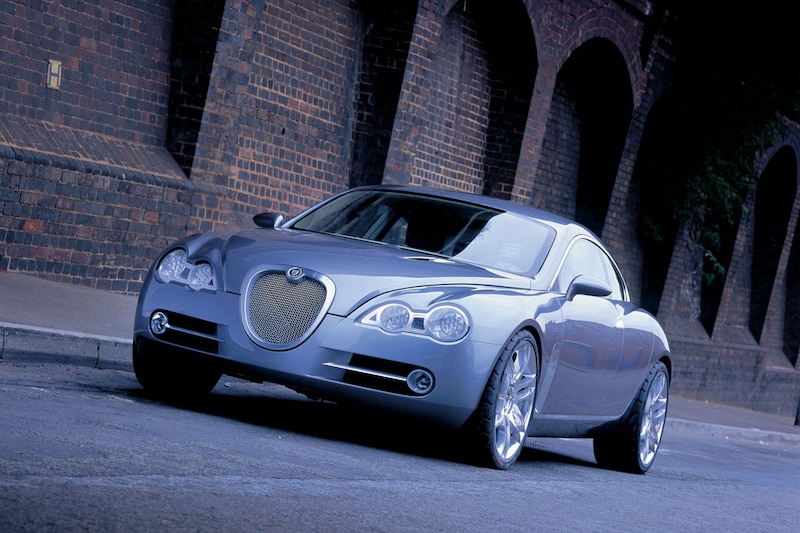The 2003 Jaguar R-D6

There was a time when the terms ‘Jaguar’ and ‘diesel’ came no closer together than the moment when the noble cars were transported by truck to the dealers. To prepare customers for the arrival of oil-drinking Jaguars, Ian Callum devised a very special concept car around the diesel engine: the R-D6.
The story goes that when Ian Callum, when he was allowed to choose a company car when he joined Jaguar in 1999, could not find anything to his liking in his boss’s fleet. Plenty of beautiful limousines, of course, and even a luxurious coupe, but no nice car with which a young, unbridled ambitious designer could profile himself properly. Jaguars had become traditional cars for equally traditional people. The brand had maneuvered itself miles away from anything ever sexy and swinging. Good thing Callum was hired.
Diesel as the future of premium motoring
In 2003 he seized his chance to make exactly the car that he missed with his brand. This is the future of premium driving: fast, efficient and fun design director at the car’s unveiling at that year’s IAA. The R-D6 was so different from anything else that had ever left Coventry that it raised many an eyebrow. Just that size of just over four meters, with which the R-D6 could call itself the smallest Jaguar ever. It was also something as ordinary as a hatchback! One with a nice twist, by the way, because the tailgate, just like the E-type, hinged on the side and not on the roof. The only logical place, says Callum, because suspension points don’t take up headroom for the rear seat occupants there.
suicide doors
For extra ease of entry, there were rear doors (suicide type), which gave the R-D6 a head start on the current generation of coupés of its size as a sporty, compact premium car. As Ian Callum predicted, the R-D6 envisioned the future of the segment. Of course he was not entirely right, because other details were not followed. See, for example, the grille, which still resembles that of the S-type.

We saw shape light units at XF
Double headlights were also completely at Jaguar in 2003, while now no model has them. The shape of the light unit itself has returned to the first XF series, but as a detail that is often seen as the only thing about that beautiful car that was not beautiful. But the R-D6 was all about the engine: a 2.7-litre V6 diesel with two turbos, helping to deliver 230 hp and 500 Nm. Enough to make the 1,500 kg kitten jump to 100 km/h in six seconds and then push it to a top speed of 250 km/h. These are figures that kick any objection to a diesel Jaguar in advance. And for those who still had doubts, Ian Callum spoke to the doyen of the company: “Sir William Lyons was always for innovation. He would have done the same.”
Twenty years ago, a Jaguar with diesel was something that people apparently had to get used to, a look at the current used car range shows that there are quite a few Jaguars for sale with a self-igniter.
.
– Thanks for information from Autoweek.nl